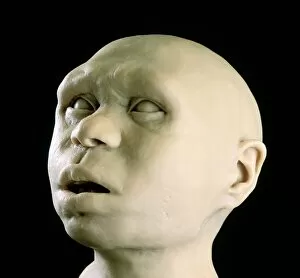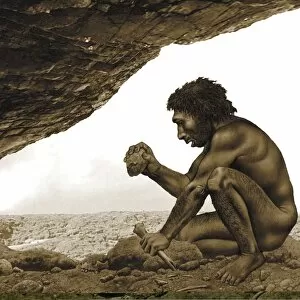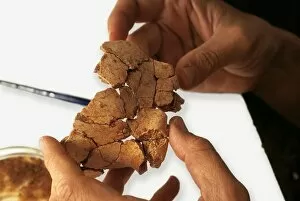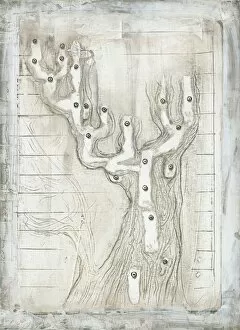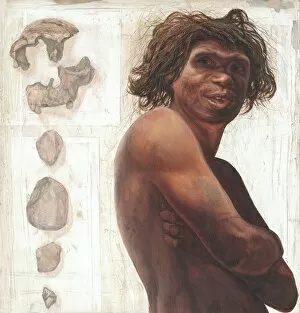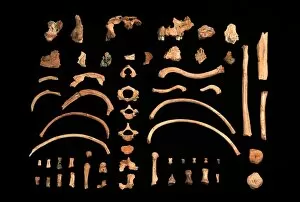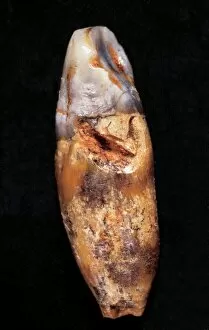Homo Antecessor Collection
"Homo antecessor: Unveiling the Enigmatic Prehistoric Ancestor" Intriguing clues from the past
For sale as Licensed Images
Choose your image, Select your licence and Download the media
"Homo antecessor: Unveiling the Enigmatic Prehistoric Ancestor" Intriguing clues from the past, like the prehistoric rib bone C015 / 6754 and fossilized frontal bone from Gran Dolina, have led scientists on a captivating journey to uncover the mysteries of Homo antecessor. This enigmatic species once roamed ancient landscapes that we can only imagine today. Step back in time as we explore the Homo antecessor landscape, where they thrived thousands of years ago. Through meticulous research and artistic interpretation, artwork C013 / 9575 brings these scenes to life, offering glimpses into their daily lives and interactions with their environment. Homo antecessor holds a unique place in human evolutionary taxonomy. As one of our early ancestors, they played a crucial role in shaping our lineage. Studying their remains has provided invaluable insights into our own origins and evolution. The repeated mention highlights its significance in paleoanthropology. With each discovery comes new revelations about this fascinating species – their physical characteristics, behavior patterns, and cultural practices. Delving deeper into the story allows us to piece together fragments of our shared history. Their presence serves as a bridge between earlier hominins and modern humans – an essential link that connects us to our distant past. As we continue unearthing remnants from this ancient ancestor's existence, it becomes clear that Homo antecessor is more than just bones; it represents resilience and adaptability amidst changing environments. They navigated challenges unknown to us but left behind traces for future generations to decipher. So let us marvel at these relics from another era – fossils whispering tales untold until now. In understanding Homo antecessor's legacy, we gain not only knowledge but also appreciation for the intricate tapestry woven by countless generations before us.

